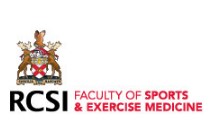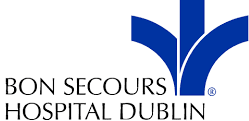Anterior Cruciate Ligament (ACL)
Anterior Cruciate Ligament
What is the ACL?
The anterior cruciate ligament is one of the major stabilising ligaments in the knee. It runs diagonally through the centre of your knee, from the bottom of the thigh bone (femur) to the front of your shin bone (tibia). The ACL acts a link between the femur and tibia, thus providing stability to the knee joint. It controls movement of the knee in multiple planes preventing the knee from collapsing and giving way.
What is an ACL injury?
An ACL tear is when the ligament becomes partially or completely ruptured (torn). Once this happens it cannot regrow or heal on its own. ACL injuries are commonly seen in sports that involve sudden stops, changes in direction, jumping and landing. An ACL injury can also occur with a sudden high-energy impact to the knee. ACL injuries may occur in isolation or combined, as other structures in the knee can also become damaged specifically the medial collateral ligament (MCL), medial meniscus (Cartilage) and the articular surfaces.
Treatment of an ACL injury
Treatment of an ACL injury is dependent on the level of activity a patient would like to resume. This will indicate if surgery is required or a more conservative route is taken. This will be discussed with Mr Jackson during your consultation.

Diagnosis of an ACL injury
An ACL injury can be diagnosed with a thorough physical examination of the knee and diagnostic tests such as MRI scans and x-rays.
Risks of Surgery
All operations involve an element of risk. Those involved in ACL reconstruction will be discussed with you by Mr Jackson and include:
- Infection (<1%).
- Blood clots also known as a deep vein thrombosis (DVT) and pulmonary embolus (PE) (<1%).
- Numbness of the skin around the wounds.
- Reoccurrence or failure of the graft. The is patient specific but may be particularly high in young (under 21) athletes heavily involved in sport.
- Major nerve or blood vessel damage (<1 in 1000).
- Patellar fracture (<1 in 1000).

What is an ACL reconstruction?
ACL reconstruction is a surgical procedure performed to restore stability to the knee. The body’s own tissues can be used to make a ‘graft’ replacement of the ACL. Mr Jackson has training in all graft options and will discuss the preferred graft option. This can depend on age, sporting activities, occupation and anatomical variations. The vast majority of individuals (90%) will be offered a patella tendon graft as our research supports this has the lowest incidence of repeat graft tears and a high return to sport success rates.
Patella Tendon
Commonly referred to as bone / patella / tendon bone (BTB) which is located at the front of the knee running from the bottom of the patella (kneecap) to the top of the tibia (shinbone). Roughly one-third of the central part of the tendon is used which leaves adequate amounts to maintain normal motion of the knee.


Hamstring Tendons
Hamstring Tendons which can be identified as firm cords at the back of the knee on the inner side, running up the thigh. Two tendons are typically harvested (semi tendosis / gracillis ) are then used as the graft. They are removed from the thigh using a small incision at the front of the knee.
To perform the reconstruction after the graft harvest, the knee is assessed internally with a camera (arthroscopy). Tunnels are drilled into the bone and placed in appropriate positions to replicate the original ACL. Once the graft is passed into the joint, it is secured in place with either screws / buttons or other fixation devices. The knee is assessed for other pathology that is generally treated at the same sitting eg meniscal tears +/- chondral damage. The wounds are mainly closed with paper stitches and wrapped in a stretchy bandage.
What happens on day of surgery?
- On admission you will check in at the reception area and be asked to confirm your details for your medical file. A member of the admissions department will accompany you to the inpatient ward waiting area.
- On arrival onto the ward you will initially meet a healthcare assistant who will take your weight and height. This will be followed by a nurse who will complete all the required checks (blood pressure, pulse, etc), allergy status to any medications, medical and surgical history. It is important to give the nurse as much detail as possible regarding your current medical status and if any previous issues with anaesthetics.
- You cannot eat or drink anything for 6 hours prior to surgery so you will generally be fasting from midnight (for a morning operation) or 6am (for an afternoon operation). This includes chewing gum.
- You will meet Mr Jackson and the anaesthetist in the anaesthetic room prior to the operation. The anaesthetist will again ask you all the same questions as the nurse completed on the ward to ensure all information has been provided.
- Once the surgery has been completed, you will wake up in the recovery room and will return to the ward after a period of time.
- On returning to the ward, you may be a little drowsy which is normal. Nursing staff will check in regularly with you and diet will be provided once fit to do so.
What happens on discharge?
A physiotherapist will see you the morning of discharge. They will explain exercises that are to be completed at home and provide confidence for using the crutches. A member of the nursing staff will change your dressing and provide documentation for discharge. This will include a prescription and wound instructions. Discharge time is approximately 10am.
General Advice
Length of stay is for one night.
Return to driving is generally recommended at 4-6 weeks post-surgery once you are off the crutches and feel can safely make an emergency stop.
Flying is not recommended for 6 weeks after surgery (particularly long haul flights of >4 hours) to minimise the risk of a deep vein thrombosis.
Wound is closed with steristrips (paper stitches). This will be clarified by nursing staff on discharge. They will be removed at the 2 week follow up appointment.
Returning to work is dependent on the physical demands and can be discussed with Mr. Jackson.
Showering is not advised for 24 hours. Cling film can be used to wrap the dressing to keep it dry.
Follow up
- ACL’s are reviewed at 2 weeks, 4 months and 9 months.
- At the 2 week appointment, you will meet Mr Jackson’s specialist physiotherapist and practice nurse.
- The physiotherapist will examine the movement of the knee and provide guidance on the next stages of rehab.
- The practice nurse will assess the wound, pain management and provide reassurance in relation to any queries.
- At the 4 month and 9 month appointments, Mr Jackson will meet you. If he is satisfied with your progress you may be discharged at the 9 month appointment.
Testing will also be carried out by the sports medicine department during your 9 month journey to ensure your recovery is advancing. These are generally carried out at the 4 and 7 month junctions and aid Mr Jackson and his team in monitoring your rehab.










